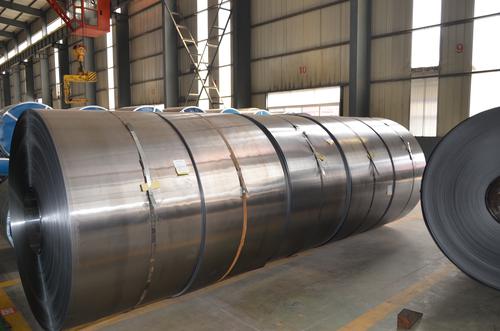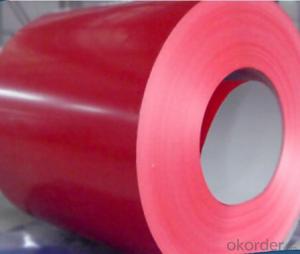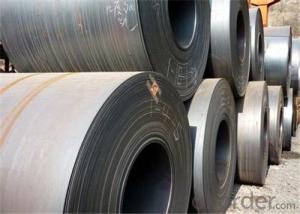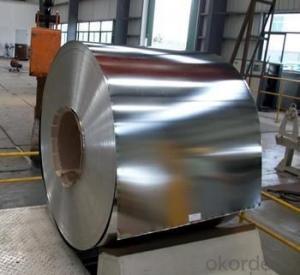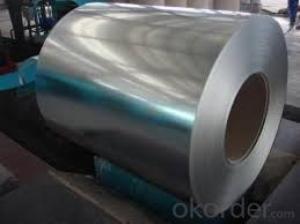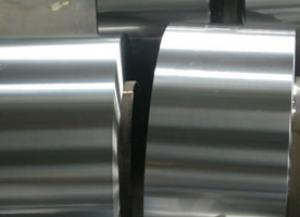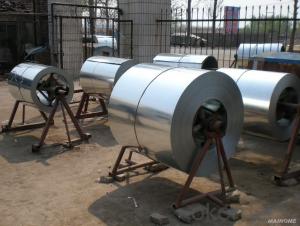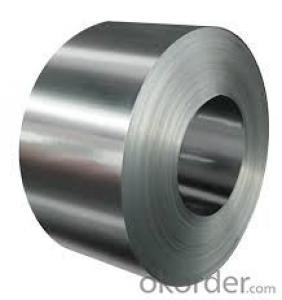COLD ROLLED STEEL COIL
- Loading Port:
- China Main Port
- Payment Terms:
- TT OR LC
- Min Order Qty:
- -
- Supply Capability:
- -
OKorder Service Pledge
Quality Product, Order Online Tracking, Timely Delivery
OKorder Financial Service
Credit Rating, Credit Services, Credit Purchasing
You Might Also Like
COLD ROLLED STEEL COIL
THICKNESS: 0.22mm/0.80mm
WIDTH:1000mm
SURFACE: BRIGHT ANNEALED, CUTTING EDGE, MATT FINISH
STANDARD:JIS G 3141 SPCC
COIL ID: 508mm/610mm
COIL WEIGHT:5-10 ton
- Q: How are steel coils inspected for surface finish?
- Steel coils are inspected for surface finish through a visual examination process where trained inspectors assess the surface quality, texture, and any potential defects or imperfections. Additionally, specialized equipment such as surface roughness testers and optical profilometers may be used to measure the smoothness, waviness, and other surface parameters.
- Q: What are the common applications of cold-rolled steel coils?
- Cold-rolled steel coils have a wide range of common applications in various industries due to their exceptional qualities. One of the most common applications is in the automotive industry, where cold-rolled steel coils are used to manufacture car parts such as body panels, chassis components, and structural reinforcements. The high strength and excellent formability of cold-rolled steel make it ideal for these applications. Another common application is in the construction industry, where cold-rolled steel coils are used to fabricate structural elements for buildings and infrastructure. Cold-rolled steel is often used to make beams, columns, and other load-bearing components due to its superior strength and durability. Cold-rolled steel coils are also widely used in the manufacturing of appliances and consumer goods. They are commonly used to create the outer shells of refrigerators, washing machines, and ovens. The smooth and consistent surface finish of cold-rolled steel makes it perfect for these applications, as it provides an aesthetically pleasing appearance. Additionally, cold-rolled steel coils find applications in the electrical industry. They are used to produce electrical enclosures, transformers, and various other components due to their excellent electrical conductivity and magnetic properties. Overall, the common applications of cold-rolled steel coils span multiple industries, including automotive, construction, appliances, and electrical. The versatility, strength, formability, and aesthetic appeal of cold-rolled steel make it a preferred choice for many manufacturers in various sectors.
- Q: I know some .50 Cal BMG will do that, but what are some other cartridges ?Also, are all steel plate the same hardness ?
- Steel plate and steel plate armour are two different grades of steel, and normally nearly anything will go through steel plate. Chetak
- Q: How are steel coils protected against bending and deformation?
- Steel coils are protected against bending and deformation through various measures. One common method is the use of protective packaging materials such as wooden crates or metal skids, which provide stability and support to prevent any bending or deformation during transportation or storage. Additionally, steel coils are often secured tightly using steel or plastic bands to maintain their shape and prevent any shifting or movement. These bands are strategically placed at regular intervals along the length and width of the coils to ensure even distribution of pressure and minimize the risk of bending or deformation. Moreover, steel coils can be further protected by placing them on a flat and level surface during storage or transportation. This helps to distribute the weight evenly and reduce the chances of any bending or deformation due to uneven pressure. In some cases, steel coils may also be coated with anti-corrosion agents to protect against moisture and rust, which can weaken the structure of the coils and lead to bending or deformation over time. Overall, a combination of proper packaging, secure fastening, and careful handling is essential to protect steel coils against bending and deformation, ensuring their structural integrity and quality.
- Q: How are steel coils used in the production of building facades?
- Steel coils are commonly used in the production of building facades as they provide strength, durability, and versatility. These coils are typically processed into flat sheets or panels and then cut, shaped, and attached to the framework of the facade. The steel coils can be coated with various finishes or paints to enhance their aesthetic appeal and protect against corrosion. Overall, steel coils play a crucial role in constructing robust and visually appealing building facades.
- Q: What are the different types of steel coil storage systems used during processing?
- There are several types of steel coil storage systems used during processing, including coil racks, coil cradles, coil saddles, coil cars, coil turnstiles, and coil transfer cars.
- Q: Is 440 steel relatively strong or weak?
- Grade 440C is capable of attaining, after heat treatment, the highest strength, hardness and wear resistance of all the stainless alloys. Its very high carbon content is responsible for these characteristics, which make 440C particularly suited to such applications as ball bearings and valve parts. Grades 440A and 440B are identical except for slightly lower carbon contents (0.60 - 0.75% and 0.75 - 0.95% respectively); these have lower attainable hardnesses but slightly higher corrosion resistances. Although all three versions of this grade are standard grades, in practice 440C is more available than the A or B variants. A free-machining variant 440F (UNS S44020) also exists, with the same high carbon content as 440C. Again this grade is not readily available in Australia. Martensitic stainless steels are optimised for high hardness, and other properties are to some degree compromised. Fabrication must be by methods that allow for poor weldability and usually also allow for a final harden and temper heat treatment. Corrosion resistance is lower than the common austenitic grades, and their useful operating temperature range is limited by their loss of ductility at sub-zero temperatures and loss of strength by over-tempering at elevated temperatures. Key Properties These properties are specified for bar product in ASTM A276. Similar but not necessarily identical properties are specified for other products such as plate and forgings in their respective specifications.
- Q: What are the different types of steel coil recoiling methods?
- There are several different types of steel coil recoiling methods, including slitting, cut-to-length, and multi-blanking.
- Q: What are the different methods of joining steel coils?
- There are several methods of joining steel coils, including welding, using mechanical fasteners, and adhesive bonding. Welding is a common technique that involves melting and fusing the edges of the coils together using heat. Mechanical fasteners, such as bolts or screws, can also be used to secure the coils together. Additionally, adhesive bonding involves using a strong adhesive to bond the coils together. Each method has its own advantages and considerations depending on the specific application and requirements.
- Q: How are steel coils used in the production of metal roofing panels?
- Steel coils are used in the production of metal roofing panels by being unrolled and fed through a rolling machine that shapes and forms the metal into the desired panel shape. This allows for efficient and precise manufacturing of metal roofing panels, which are then used for construction purposes.
Send your message to us
COLD ROLLED STEEL COIL
- Loading Port:
- China Main Port
- Payment Terms:
- TT OR LC
- Min Order Qty:
- -
- Supply Capability:
- -
OKorder Service Pledge
Quality Product, Order Online Tracking, Timely Delivery
OKorder Financial Service
Credit Rating, Credit Services, Credit Purchasing
Similar products
Hot products
Hot Searches
Related keywords



